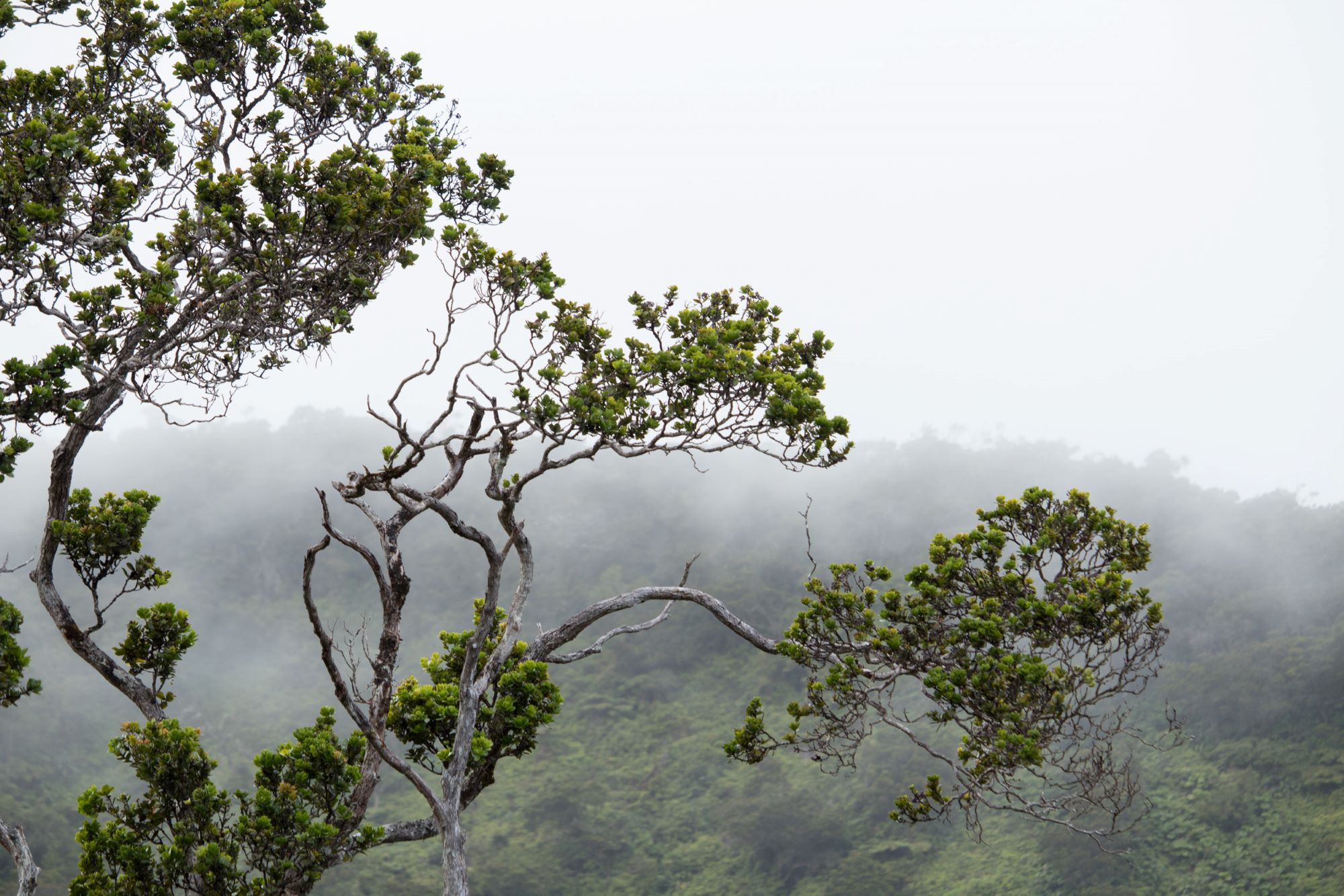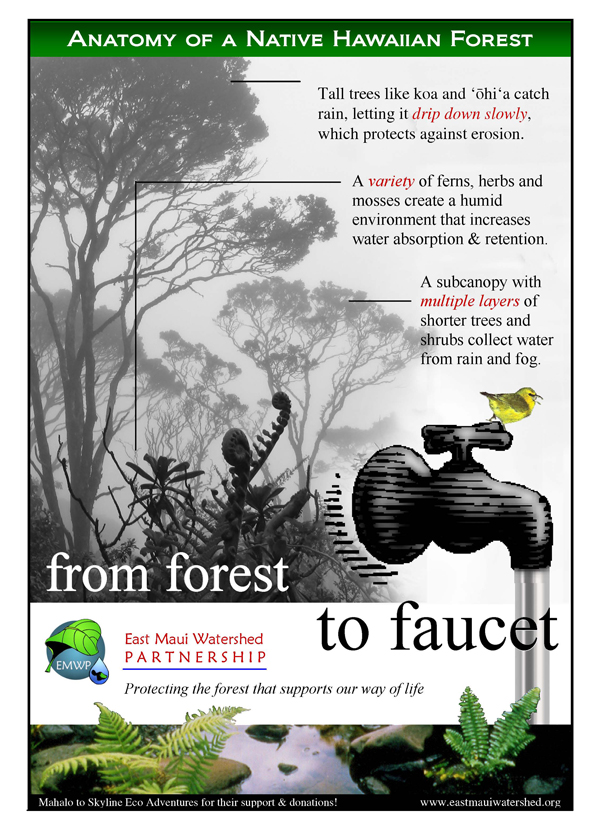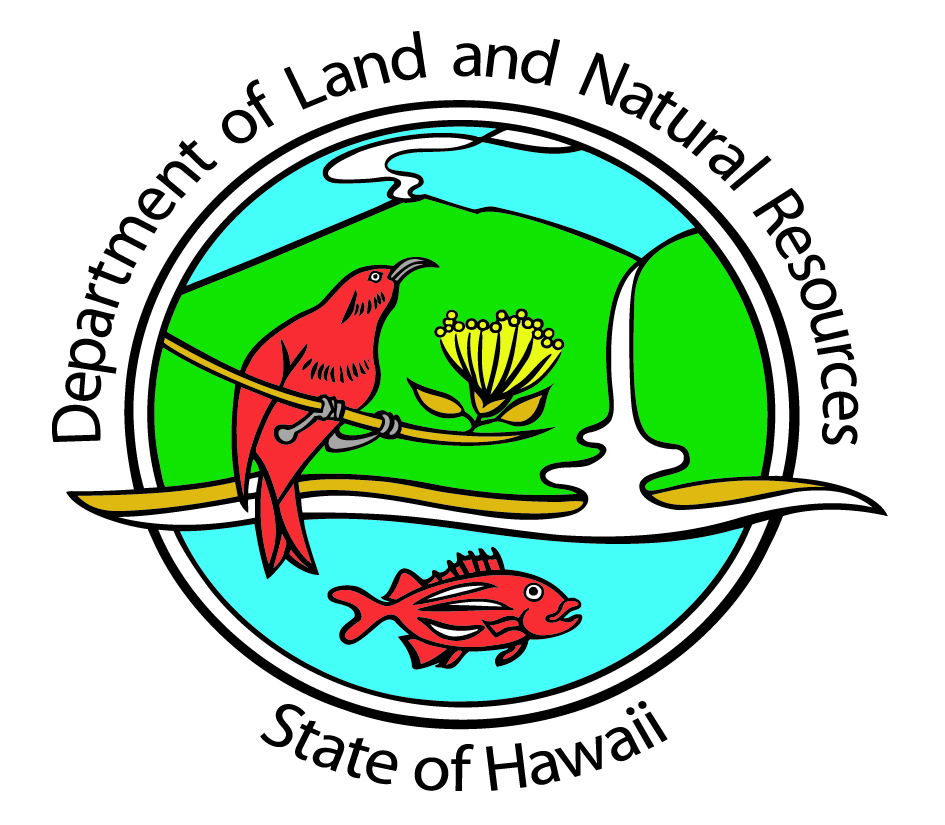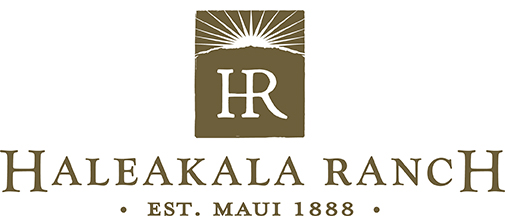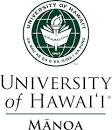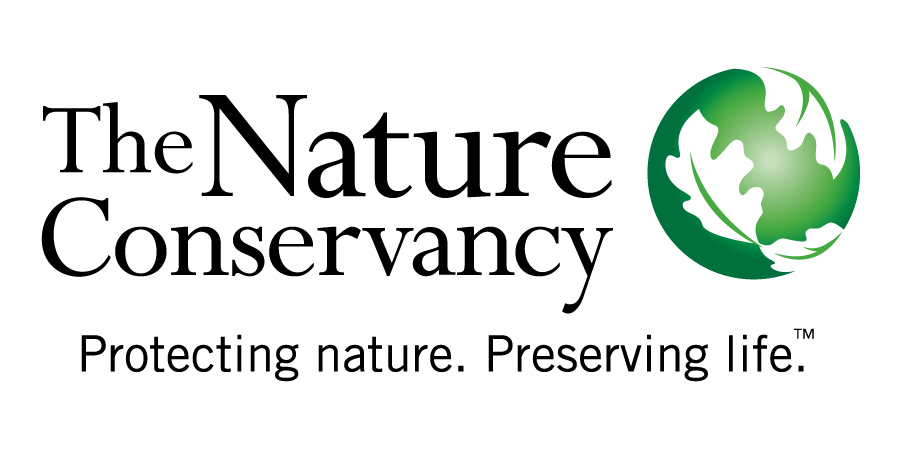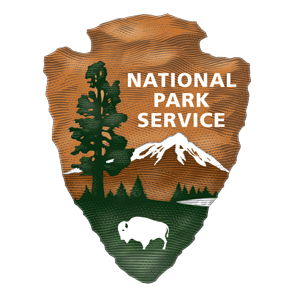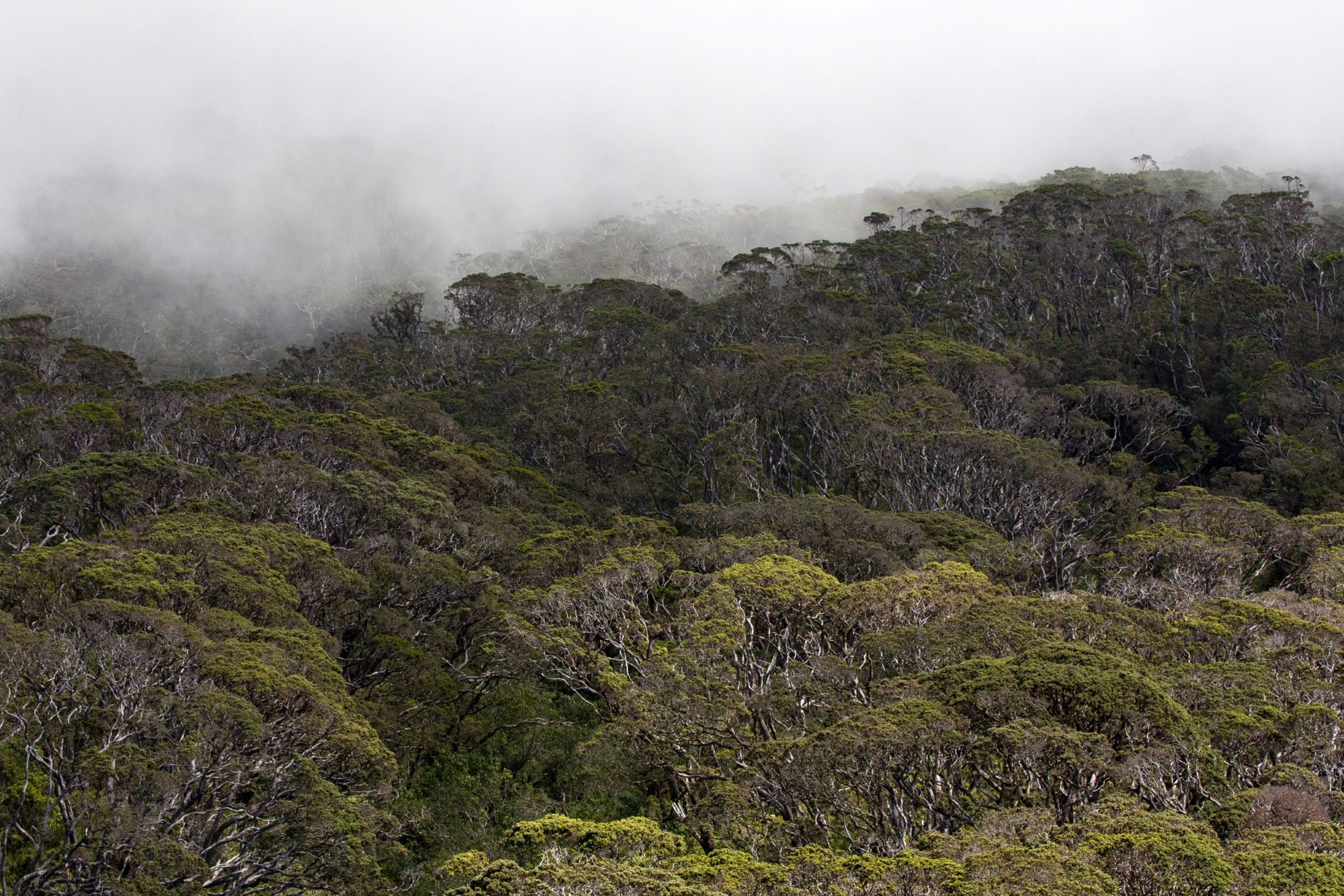
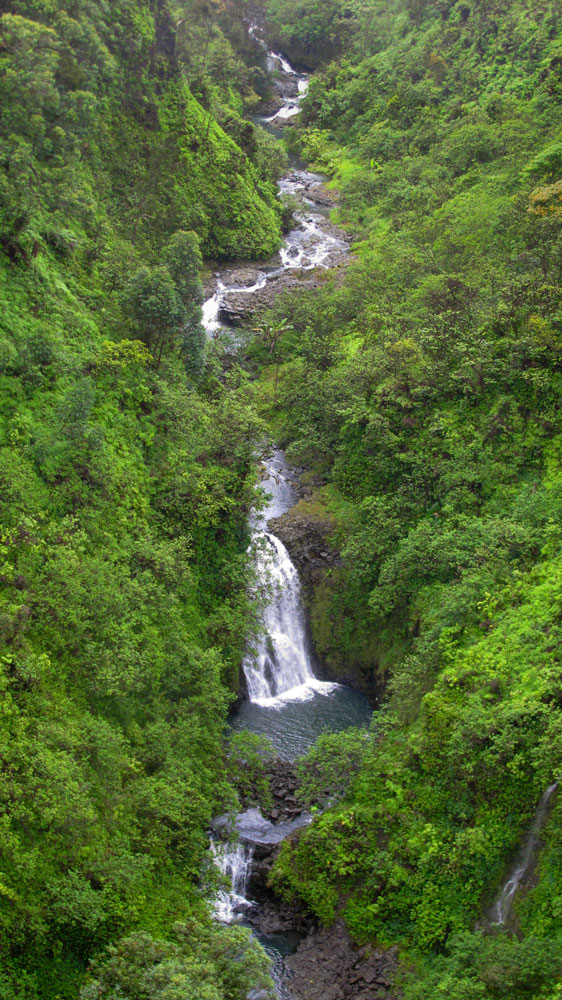
How Does it Work?
Is it a shed made of water? No. Is it the place where water sheds? Yes.
A watershed is an area of land, such as a mountain or valley, that collects rainwater into a common outlet. In Hawai’i, the common outlet is ultimately the ocean. Some of the rain is absorbed by plants, some of it is absorbed underground, and the rest flows into surface rivers and streams.
The closest Hawaiian equivalent of a watershed is the ahupuaʻa (ah-hoo-pooah-ah). In ancient Hawaiian culture, Ahupuaʻa were political regions, often entire valleys, with the ridges between serving as boundaries, varying on different islands from as little as 100 acres to more than 100,000 acres. Ahupuaʻa included the land from the mountains to the coast that drains into a stream, and the coastal ocean extending out to and including the coral reef.
Can a city be a watershed? Sure. Any landscape, be it paved, farmed or forested is made up of many interconnected watersheds. In a city, rainfall is collected as runoff from streets into gutters that lead ultimately into the ocean. This means that any trash, oil, fertilizer and other debris in the path of a watershed will also get dumped into the ocean.
How Does it Work?
Rainfall is only a part of the water cycle equation. Our rainforests and watersheds are the island’s major water producers. Trees, shrubs, and mosses capture rainwater and can actually increase rainfall and condensation.
Forested watersheds perform four basic and crucial functions. We call these functions the Umbrella, Anchor, Sponge and Pump.
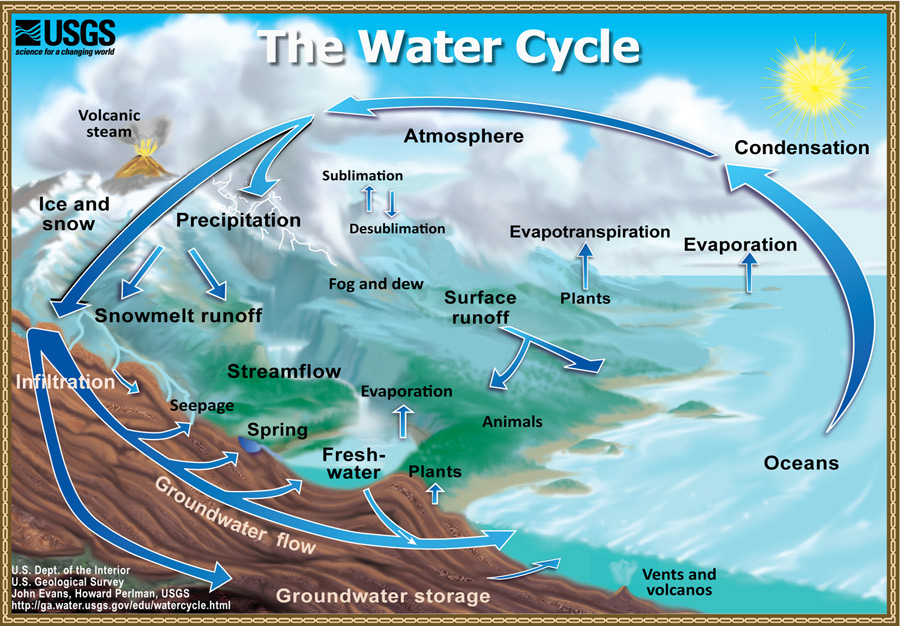
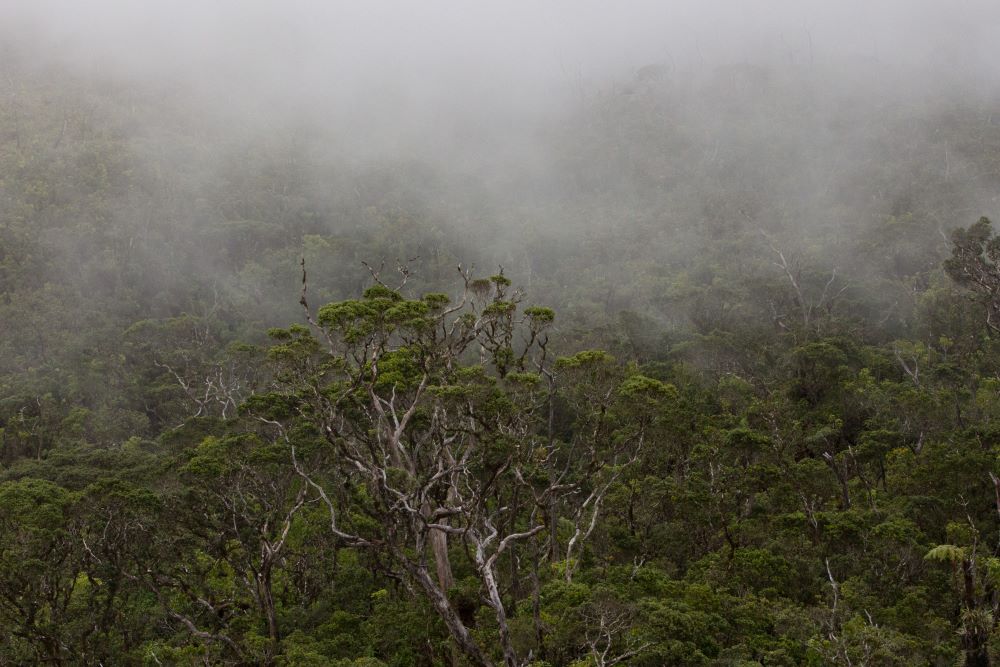
Umbrella
Tree leaves, branches and understory plants intercept rain before it reaches the ground. This slows down the velocity and force with which the water hits the soil. The “umbrella” reduces the rain’s ability to erode soils and increases the infiltration of rain water into the ground.
Fog condensing on trees and other vegetation is an important part of water resources. In Hawai’i, fog interception can increase total annual rainfall by as much as 30%!

Soil Anchor
The roots of trees and plants grip the steep mountain soils of the East Maui Watershed, preventing it from washing into the ocean. This protects our ocean reefs and marine life. Invasive plants can threaten the anchoring ability of a native forest.
For example, the picture shown above compares a stand of strawberry guava, a fast growing tree from Southeastern Brazil that is now invading Hawaiʻi. Spread by shoots and seeds, along with the help of non-native birds and animals, it aggressively crowds out any native plants. A forest of strawberry guava does not anchor soil as well as a native forest, and soil is easily eroded. Compare the non-native with the native forest in the image above. Which do you prefer?
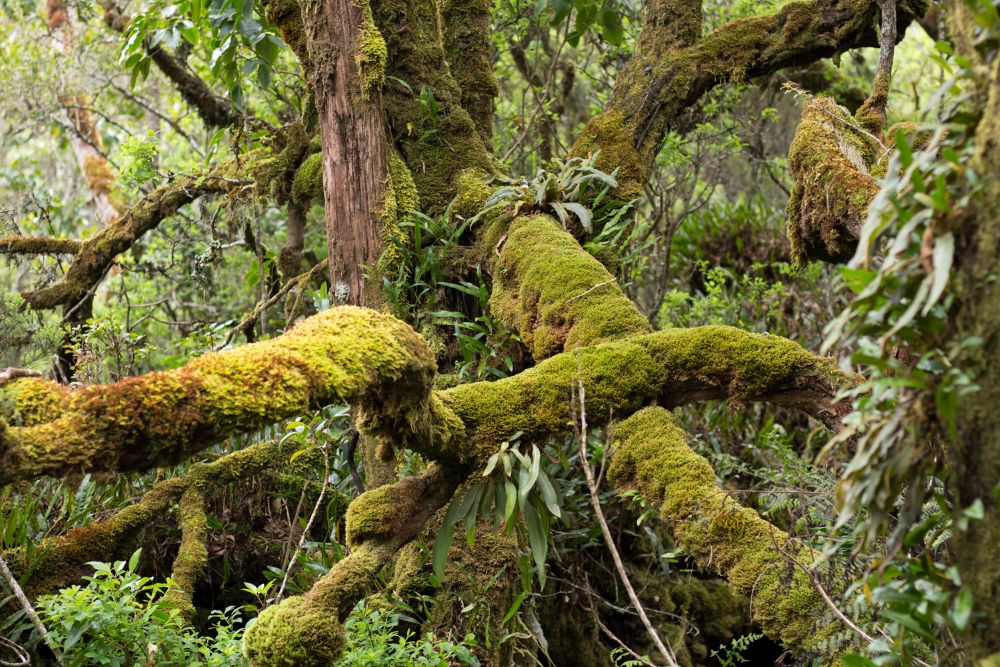
Sponge
A forested watershed acts like a sponge, soaking up rainfall into its soil, roots, mosses, ferns and leaves. When they are all fully saturated, they slowly release water, thus delivering a consistent and dependable source of water for eventual use by the forest, wildlife, and humans, long after the rain has fallen.
Can an urban watershed act as a sponge? No, not very well. Most cities are paved with concrete and cement, which are not very porous. Little or no water is absorbed into the soil beneath; most of the water runs down streets and into gutters. The people of Maui must depend on the water saved from forested watersheds to supply fresh water in dry times.
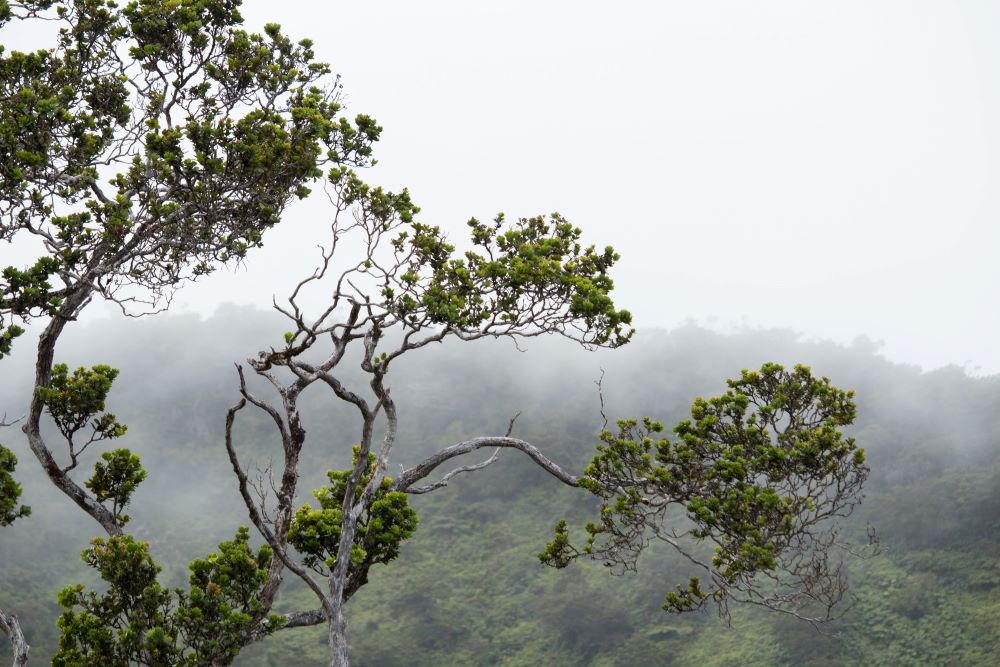
Pump
Plants use water, which is released back into the atmosphere through evaporation and transpiration (evapotranspiration). Both of these processes are increased by warm and sunny conditions. The cooler temperatures and cloudy conditions found in the East Maui Watershed greatly suppress evapotranspiration. This allows much of the rainfall and condensed fog to soak into the ground and move through the soil. Less water is “lost” into the atmosphere and more water is retained. Thus, forested watersheds “pump” water back into the soil, which appears later as clean water in underground and surface streams.
Why Protect It?
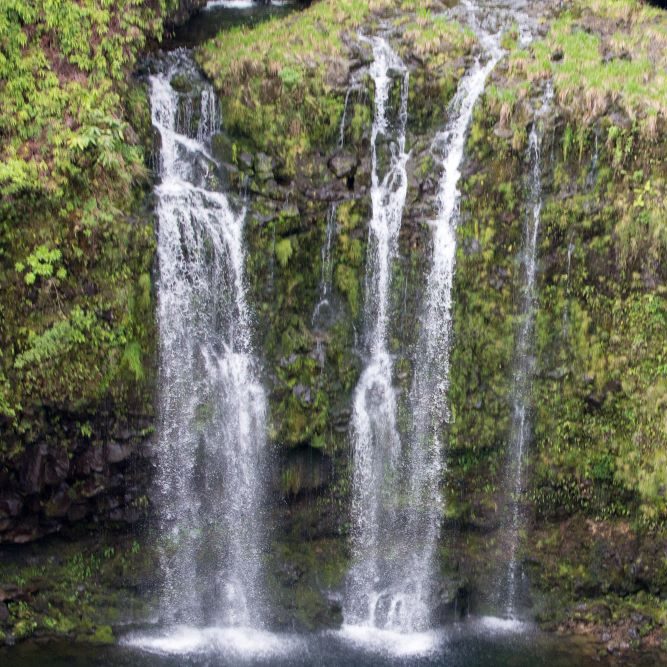
Water
Our bodies are made up of 66% water. Water is an essential nutrient that is involved with every function of the body. We need water in order to grow the food that we eat. Simply put, water is the source of life, and a watershed that protects our water is the key to life. How much is a healthy life worth to you?
Remember: a healthy forest = fresh, clean water

Native Species and Ecosystems
The watershed comprises some of Hawaii’s richest remaining native forest that is habitat for the world’s greatest concentration of endangered birds, as well as several plant and invertebrate species found nowhere else in the world.
The rainforests in East Maui are one of the last great strongholds for the native plants and animals that greeted the first Hawaiians over 1,500 years ago. These areas, such as the Hanawi Natural Area Reserve are recognized as one of the most important conservation areas in the state.
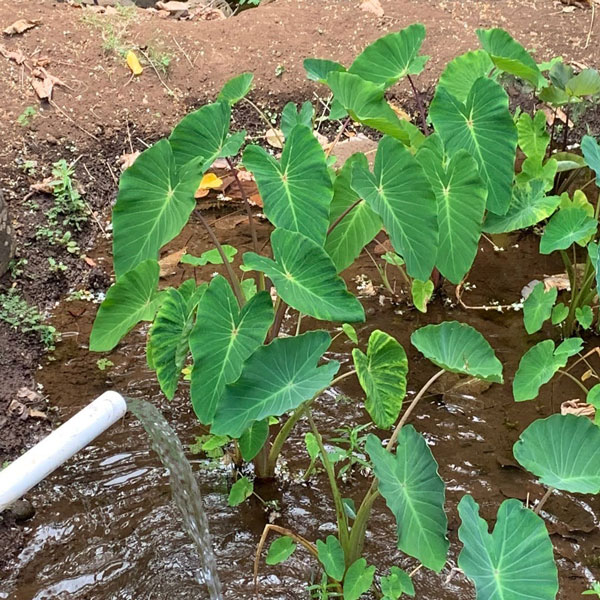
Culture
The native forest is of great cultural significance as the home of plants and animals important in Hawaiian culture and of folklore and traditions based on ancient relationships with the land. Ahupuaʻa, the closest Hawaiian equivalent to a watershed, contained nearly all the resources Hawaiians required for survival. Fresh water resources were managed carefully for drinking, bathing, and irrigation. Wild and cultivated plants provided food, clothing, household goods, canoes, weapons and countless other useful products. Many land and sea creatures are utilized for food and also provided bones, teeth, and skin, as well as feathers for tools, crafts, and ornamentation. For more information, pick up “Life in Early Hawaiʻi: The Ahupuaʻa” from Kamehameha Schools Press.
